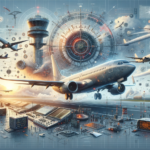The Growing Demand for Aviation Professionals
The aviation industry is experiencing a surge in demand for skilled professionals, driven by the rapid growth of air travel and the expansion of global connectivity. According to the International Air Transport Association (IATA), the number of air travelers is expected to double by 2037, reaching 8.2 billion. This growth translates into a significant need for trained personnel in various roles, from pilots and air traffic controllers to maintenance engineers and cabin crew.
Several factors contribute to this rising demand. Firstly, the increase in low-cost carriers has made air travel more accessible to a broader audience, leading to higher passenger volumes. Additionally, emerging markets are witnessing a boom in air travel, further fueling the need for aviation professionals. As a result, airlines and airports are investing heavily in recruitment and training programs to ensure they have a skilled workforce to meet future demands.
Moreover, the aviation industry is undergoing a technological transformation, with advancements in aircraft design, navigation systems, and airport operations. These innovations require professionals with specialized skills and knowledge, creating new opportunities for those entering the field. From the integration of artificial intelligence in air traffic management to the development of environmentally friendly aircraft, the industry is evolving rapidly, and skilled professionals are at the forefront of this change.
Comprehensive Training Programs: A Pathway to Success
Entering the aviation industry requires rigorous training and certification, ensuring that professionals are equipped with the necessary skills and knowledge to perform their roles safely and effectively. Various training programs are available, catering to different career paths within the industry.
For aspiring pilots, flight schools offer comprehensive programs that cover everything from basic flight principles to advanced navigation techniques. These programs typically include ground school instruction, simulator training, and actual flight hours, culminating in obtaining a pilot’s license. Similarly, air traffic controllers undergo extensive training to manage aircraft movements safely and efficiently. This training involves classroom instruction, simulator exercises, and on-the-job training at control towers.
Maintenance engineers, on the other hand, need to complete specialized courses in aircraft systems and maintenance procedures. These programs often include hands-on training with real aircraft components, ensuring that trainees are well-prepared for the technical challenges they will face on the job. Additionally, cabin crew members receive training in customer service, safety procedures, and emergency response, equipping them to handle various situations during flights.
The aviation industry places a strong emphasis on continuous learning and professional development. Many organizations offer ongoing training programs to keep their employees updated with the latest industry standards and technological advancements. This commitment to education ensures that aviation professionals remain competent and confident in their roles, contributing to the overall safety and efficiency of air travel.
Challenges and Opportunities in Aviation Training
While the aviation industry offers numerous opportunities for aspiring professionals, it also presents several challenges that must be addressed. One of the primary challenges is the high cost of training, particularly for pilots and maintenance engineers. The financial investment required for these programs can be a barrier for many individuals, limiting access to the industry. However, various scholarships, grants, and sponsorships are available to help offset these costs, making training more accessible to a wider audience.
Another challenge is the need for standardized training programs that meet international regulatory requirements. As the aviation industry is highly regulated, professionals must adhere to strict safety and operational standards. Training programs must align with these regulations to ensure that graduates are adequately prepared for their roles. This alignment requires collaboration between training institutions, regulatory bodies, and industry stakeholders to develop comprehensive curricula that address the industry’s needs.
Despite these challenges, the aviation industry offers numerous opportunities for career growth and advancement. With the ongoing expansion of air travel and technological innovations, there is a constant demand for skilled professionals. Those who invest in their training and education can look forward to rewarding careers with competitive salaries and benefits. Furthermore, the industry’s global nature provides opportunities to work in various locations worldwide, offering a unique and dynamic career path.
In conclusion, aviation training is a crucial component of the industry’s success, ensuring a steady supply of skilled professionals to meet the growing demand. By addressing the challenges and leveraging the opportunities available, individuals can embark on fulfilling careers in this exciting and ever-evolving field.








